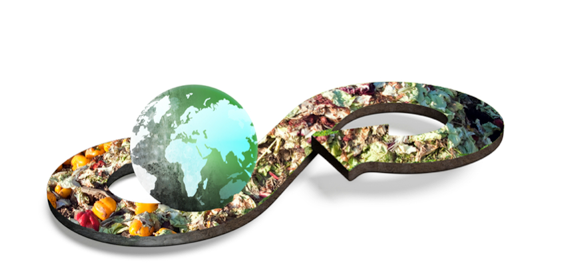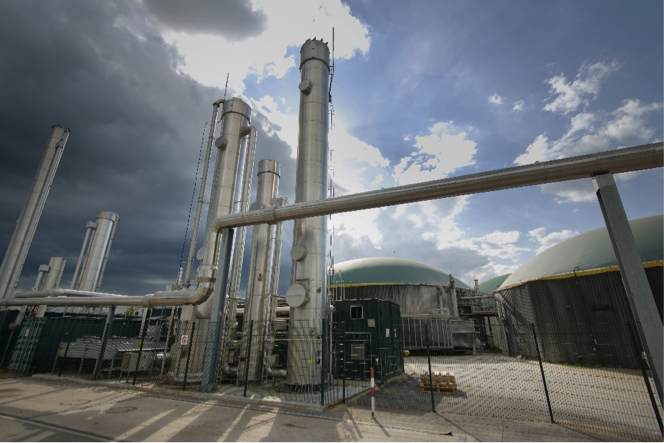Image: Shutterstock
Lisa Ruetgers, doctoral researcher and Jordon Lazell, Centre for Business in Society
Humanity is consuming the equivalent of 1.6 planets to provide the resources we use and absorb as waste (Global Footprint Network 2016). Consequences of such over-consumption are resource depletion, climate change, air and water pollution, species extinction and loss of fertile soil amongst other environmental, social and economic degradation. The circular economy is increasingly emerging as a means of continuing our highly resource dependant lifestyles whilst minimising and mitigating any negative implications alongside kick starting an economy based upon reuse and recycling. This has been defined as “an industrial economy that is restorative or regenerative by intention and design” (Ellen MacArthur Foundation, 2013) involving elements of a closed loop of material flow to relinquish the highest value of products and their components.
Yet this solution of having our cake and eating it too is not so simple. Scholars have raised the conundrum of the limitations of more sustainable production and consumption in that greener and more efficiently made products still lead to the consumption of resources and the creation of waste and pollution. Cases of ‘lock in’ have been described where despite efficiency gains across supply chains, manufacturing methods, recreational and commuting practices, the increased demand for consumption has meant resource use actually increases (Jackson and Papathanasopoulou, 2008). Furthermore with the European Commission, governments, universities and practitioner organisations embracing the circular economy, a question remains over how its implementation can actually address the problems caused by over-consumption whilst contributing towards more sustainable and equitable societal development.
Food is one resource that requires critical attention as up to a third of all food is estimated to be wasted each year (FAO, 2013). Reducing food waste has the potential to save resources, reduce pollution and increase food security, for example by feeding 12.5% of the world’s malnourished people (FAO, 2012). Developed regions, such as Europe, North America, and industrialised Asia waste more food than developing countries, with the loss happening at different levels in the supply chain. In low-income countries poor infrastructure, especially for storage, inefficient technologies and climate conditions lead to wastage at post-harvest and processing stages, while in high-income countries most food waste is created by retail and end-consumers due to mismanagement and forecasting errors as well as the buying, preparing, and serving of too much food. WRAP (2013) found that the UK retail sector creates 1.6 million tonnes of waste annually, the majority of which is made up of food. How therefore can the circular economy help with this problem?
Food waste features in the European Circular Economy package noting a series of measures such as prioritising the preventing of food going to waste over reduction and energy recovery, adoption of a common methodology to measure food waste across member states, dissemination of good practices in food waste prevention and clarification of EU legislation on food donation and date marking (European Commission, 2015). Such actions aim to reduce the amount of waste existing beyond the consumer whilst ensuring as much surplus food as possible is directed towards human consumption rather than recovery or disposal actions.
Supermarkets play a key role in circular economy actions relating to food. These businesses have been accused of enabling food waste by overstocking shelves (often linked to consumer expectations) and wasting surplus food given procedures around best before labelling and re-stocking (Stenmarck, et al. 2011). In a circular economy resources are used on ways to extract maximum value, recovering, re-selling and materialising wherever possible. Innovative businesses models that are applying this strategy to food waste include:
- Wefood in Copenhagen collects donated surplus food (edible food waste) from retailers and sells it at reduced prices in its stores.
- Approved Food is a UK wholesaler that buys products that are close to or past their best before date from supermarkets and resells those at low cost in its online shop.
- Asda and Waitrose sell misshapen vegetables at reduced prices
- ‘Too good to go’ is an app allowing restaurants to sell their leftover food at the end of the working day to consumers, who order a portion during the day and can pick their cheap restaurant meal up 1h before closure
These business models are great examples for a circular economy in the retail and hospitality sector. Turning food waste into animal feed, incinerating it for energy generation or composting waste are a less valuable means of the most desirable use of food, i.e for consumption. This is superior to sending food waste to landfill given the production of methane, a harmful greenhouse gas.
Looking to the consumer’s role in the food waste problem, the concept of the circular economy has the potential to place greater responsibility on retailers and food sellers to ensure that those who purchase their products avoid throwing them away. The major supermarkets in the UK all engage the provision of advice and initiatives to prevent food going to waste, linking such efforts to saving money on the weekly shop. WRAP as a leader in disseminating such messages through their ‘love food hate waste’ campaign, note that the average family throws away £700 per year worth of food (WRAP, 2017a). However this is contradictory to the clever marketing campaigns and food fads that draw consumer’s to buy more than they require. The most recent WRAP food waste figures indicate that in spite of their efforts, from 2012 to 2015 there was a 4.4% increase in consumer food waste from 7 to 7.3 million tonnes (WRAP, 2017a). At the same time the amount of houses receiving a food waste collection increased (WRAP, 2017b), reducing the amount of food waste going to landfill and exercising the circular economy in diverting waste to anaerobic digestion plants. This then creates a puzzled picture where despite the overall amount of food waste from households increasing, the amount of food actually thrown away at landfill has potentially decreased.
The greater question here perhaps underpinning the momentum of the circular economy is whether such prevention, re-use, recycle, recovery and efficiency actions are sufficient to offset the increasing use of resources and furthermore the degradative impacts that result from this. The potential growth from ensuring that materials are used in the most sustainable and higher value way is considerable given the need for new and innovative business models to promote less extractive based economies. However at the same time, there is little narrative around lowering or reducing consumption of new products and usage of new materials in the first place. New initiatives to recirculate products, such as those based upon the sharing economy, can help in reducing the consumption of new goods, and initiatives around sharing food now exist to potentially achieve a scalable impact (see the app OLIO).
The business models highlighted here are innovative ways of dealing with surplus food but what about ensuring that there is not any surplus food in the first place? In a perfect world such businesses would not need to exist. The circular economy therefore has driven and will continue to drive great progress in dealing with the food waste problem but is it really getting to the heart of what is causing surpluses of food in the first place?
These and similar questions will be discussed at the Conference “The Circular Economy: Transitioning to Sustainability?” organised by the Coventry University Centre for Business in Society (CBiS) on 11th July 2017.
The authors of this blog dedicate their research to the reduction of food waste at the household and retail level.
References
Ellen MacArthur Foundation (2013) Towards the Circular Economy: Economic and Business Rationale for an accelerated transition. [online] Available from <https://www.ellenmacarthurfoundation.org/assets/downloads/publications/Ellen-MacArthur-Foundation-Towards-the-Circular-Economy-vol.1.pdf>
European Commission, 2015. Closing the loop – An EU action plan for the Circular Economy, Com. Brussels.
FAO (2013) Food Wastage Footprint. Impacts on Natural Resources. Summary Report [online] available from <http://www.fao.org/docrep/018/i3347e/i3347e.pdf, p.6>
FAO (2012) The State of Food Insecurity in the World [online] Rome. available from <ftp://ftp.fao.org/docrep/fao/011/i0291e/i0291e00.pdf>
Jackson, T. and Papathanasopoulou, E. (2008) Luxury or ‘lock-in’? An exploration of unsustainable consumption in the UK: 1968 to 2000. Ecological Economics. 68, 80-95
Love Food Hate Waste (2017) Your Food Isn’t Rubbish. [online] Available from <https://www.lovefoodhatewaste.com/why-save-food>
Stenmarck, Å., Hanssen, O., Silvennoinen, K., Katajajuuri, J., Werge, M. (2011) ‘Initiatives on prevention of food waste in the retail and wholesale trades’. Nordic Council of Ministers. Copenhagen.
WRAP (2017a) Household Food Waste in the UK, 2015. [online] Available from <http://www.wrap.org.uk/sites/files/wrap/Household_food_waste_in_the_UK_2015_Report.pdf>
WRAP (2017b) Synthesis of Food Waste Compositional Data 2014 & 2015. [online] Available from < http://www.wrap.org.uk/sites/files/wrap/Synthesis_of_Food_Waste_2014-2015.pdf>
WRAP (2013) Estimates of Waste in the food and drink supply chain. [online] Available from < http://www.wrap.org.uk/sites/files/wrap/Estimates%20of%20waste%20in%20the%20food%20and%20drink%20supply%20chain_0.pdf>





Comments are disabled